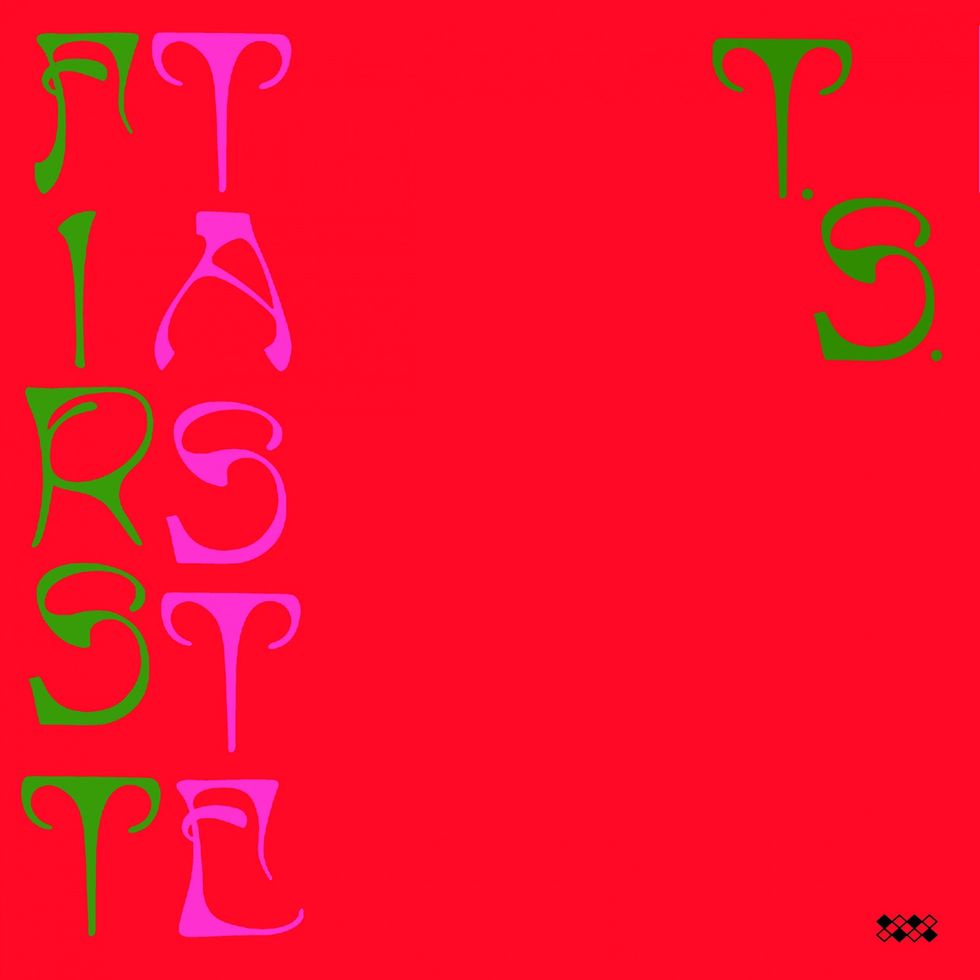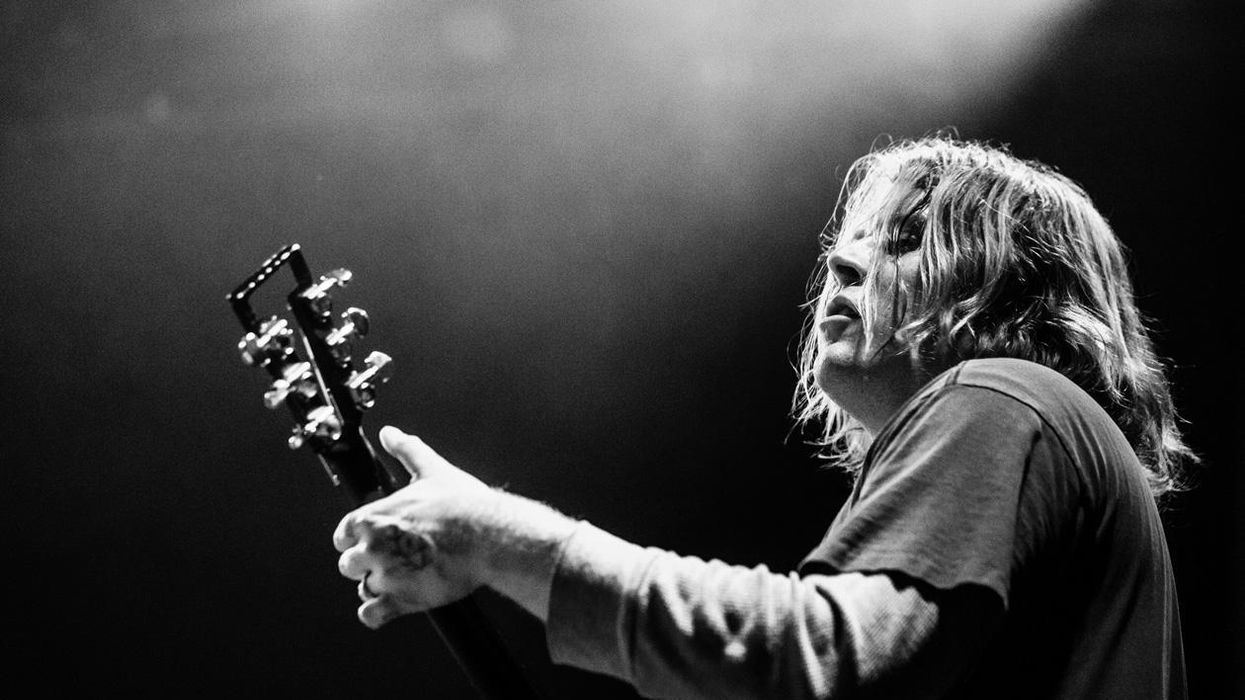Let's refrain from “burying the lead," so to speak, and begin instead with an uncanny revelation: There are no guitars on noted garage/psych-rocker Ty Segall's new album. None. And it's not a move he made by design—at least, not exactly. As Segall himself explains, the idea emerged from what he experienced as a mild crisis of creative necessity.
“I noticed that I was falling into patterns with my guitar playing," he says candidly. “I think that happens if you become too familiar and comfortable with an instrument. For me, it just felt like I was using similar voicings and chords all the time, so I thought I needed to play instruments I didn't know how to play, you know? Those are the instruments I literally learned how to play for the album, and I wrote songs on them for the first time."
Given his inexhaustible penchant for sonic experimentation, it all fits the profile for Segall, who over the past decade has churned out a rapidly expanding galaxy of genre-busting rock, ranging from the raw, throwback garage punk of his 2008 self-titled debut to the mind-bending sophistication of 2014's Manipulator, a deep study in psychedelic freestyling inspired by the likes of Jimi Hendrix's Electric Ladyland. But even a passing familiarity with Segall's recorded output reveals that not only has the electric guitar been a prime vehicle for his musical expression, it's actually the focal point of what makes him so compelling as an artist. So how did he pull off a complete switching of gears to make the album he chose so cheekily to call First Taste?
The answer lies in his selection of instruments, which includes a flute-like Japanese recorder, an electric Omnichord, a mandolin, and, most importantly, a Greek 8-string bouzouki (bought at a music store in Van Nuys, California, not far from Segall's new home in Topanga Canyon) and a 5-string electric koto (acquired while on tour in Japan). And while the bouzouki and koto might be, at best, distant cousins to the guitar, Segall still had to learn his way around them from scratch. Even so, when he told the members of his Freedom Band last summer that he wanted to track an axe-less album, they couldn't wait to get started.
“We wanted to really try to make this record sound differently than my other records," Segall says, also referring to coproducer Matt Littlejohn, who has worked with the band for years as its go-to sound engineer. “It was fun because it yields different song structures, chords, and changes. You're kind of writing blindly, and then you're mixing differently, too. Matt's ears are so great—he was a key part of all that."
“Taste," the album's marauding first single, encapsulates the approach. Over a hard-swinging beat that features Segall on drums in the left channel and longtime skin-basher Charles Moothart on the right, bassist Emmett Kelly lays down what amounts to a blown-out guitar lick to carry the rhythm. The song is a cacophony of percussion, with Segall shouting, almost sneering, the line, “Our salivating makes it all taste worse." But what really jumps out are the sitar-like stabs of the koto, routed through distortion and an array of unmistakably prismatic, perception-altering effects. It's an in-your-face introduction that retains all the sass, flair, and freaked-up genius of a Ty Segall production—just without the familiar crunch of an overdriven Gibson Les Paul Standard or Travis Bean TB1000S (the latter being his current go-to guitar on tour).
“The koto is really the star of the record," Segall asserts. “I'm just so stoked on the sound. When I was exploring different instruments, it was hard to find something that could replicate the harshness, or the gnarliness, or the wild style of a guitar, and the koto was the thing where I was like, 'Ah, here it is! This is the thing I can play that can replace the crazy electric guitar sound.' I mean, not fully, but it exists in that realm."
Segall ventures well beyond the boundaries of the realm on First Taste. “The Arms," one of the album's quieter numbers, adapts and transmutes a sound akin to early '70s Kinks, with the bouzouki (and what sounds like mandolin) front-and-center in the mix. By contrast, “Radio" bounces along over an insistent tom-tom beat, with a clean, effect-less koto buzzing in the background like a cicada on a hot summer day. Longtime bandmate Mikal Cronin bites Albert Ayler-like into the saxophone on “Whatever," a dark and funky groover that lopes along on the back of Kelly's stripped-down, distorted bass line, with Segall ripping a solo on the ever-present bouzouki. And then there's “The Fall," a tripped-out and frenetic anthem that features a harmonized koto surging and swirling insistently throughout. Overall, it's a weird and wondrous new direction for Segall—and it's pretty clear that he's not done pursuing it.
“We're playing all the instruments live, for sure," he says, relishing the challenge of playing First Taste on the road. “I think it's the best point in time right now, where I'm not fully fluent in these instruments, because I feel like if I get too familiar with them, it'll be less interesting. So I'm hoping I can squeeze out a few more songs before I fall into a routine with them. But now they'll always be in the studio to use on stuff in the future."
Were there any ideas you developed while making last year's Freedom's Goblin that bled into First Taste?
I feel like every record will inform the next one, and it's almost like a reaction to the previous record, in a new way. So I guess when I started working on new songs for this one, I just wanted to find different sounds, and then that turned into doing different things without the guitar—buying weird instruments and stuff.

TIDBIT: First Taste continues Segall's long-running working relationship with producer and engineer Matt Littlejohn, whom Segall basically considers part of the band.
And then the idea just became, “Well, what if there's no guitar at all? What if I just really try to find different instruments that can replace that sound?" So that became the idea. It wasn't the idea at first, and I had definitely written songs without that in mind, but that's what it ended up being. Freedom's Goblin is super guitar-based, and I think that's where it might have started. I wanted to change that whole approach.
Were you listening to Middle Eastern or East Asian styles of music at the time?
I'm always into trying to find new records. It's like the endless search to find stuff to listen to. So it was a combination of that, and actually getting back into writing on the drums, specifically with non-rock rhythms like funk, and African and Middle Eastern rhythms.With the stringed instruments, it was just about trying to get out of my comfort zone. When I bought the bouzouki, I had no idea how to tune it, but luckily it sounded in tune, and then I googled it to make sure it was correct. But the koto is really interesting, because it's got five strings, with a drone, so there's basically a low E, like a guitar string, and then the other strings are all high E, or even B strings. So there's a lot of weird variations that you can do. You can tune it so it almost works like an autoharp, where you press a button and a clasp locks down on the frets. It's at least two, if not three, octaves, so it goes really high, and you can't really form your own chords. It's just barring them, so it's weird because you can tune it all to one note, to a major chord or a minor chord, or to a seventh, or whatever you want. For this album, I mostly stuck with tuning the strings all to one note, and it became this weird, blurry, droney thing. I guess, to my ear, it sounds like a sitar.
How did you go about recording these instruments?
Well, with the bouzouki, we recorded it like an acoustic guitar. We had either two condenser mics, or a condenser mic and a ribbon mic, going through a compressor—like the classic acoustic guitar style. But the koto we recorded like I would record my electric guitar: either through my regular setup [a Fender Quad Reverb] or with a DI, which I like doing a lot just because it sucks the air out and has that fingers-on-your-face kind of a sound. And actually, the bouzouki has a pickup in it. I think it's a contact mic, so it sounds pretty awful, but if you blow it out and fuck it up, it sounds cool. The koto has a guitar pickup in it, too. I think someone hot-rodded that thing [laughs].
It sounds like you're running them through effects, too. What might you have used on the koto, especially on “I Worship the Dog?"
I've got a fuzz pedal I like to use called the Octave Clang. It's got a bit of a curve to the sound—like, it creeps. I mainly use that and the Fuzz War, both Death By Audio pedals. All over the record, though, is an Eventide H949 Harmonizer. That's the main effect. Usually, on all my other records, I'm using a [Roland] Space Echo or a tape echo, but I've become completely infatuated with the Eventide. It's the effect that Bowie used on [1977's] Low—just a crazy '80s[-ish] effect, but you can do really fucked-up, weird shit on it. All the weird, echo-y, spaced-out stuff is coming from that.
Is it true that you recorded most of the album at Panoramic House [an artist's retreat in California's Mount Tamalpais State Park]?
We ended up recording about half of it there. I did a little bit of what I did with Freedom's Goblin, which I really enjoyed doing, which is basically to book time with at least two studios, and then try to do multiple versions of songs, and then whichever version is the best one wins. It's not very fun for me to have a version of a song and feel like, “Oh, that's the only recording we have, so it has to go on there." Basically we recorded the whole record at my home studio first, and then we went up and did all these versions at Panoramic House.
And yeah, that place is the best. I mean, when you wake up, it's a 20-minute walk down to Stinson Beach. You make some coffee, watch the seals swim around, and then go up and record some music. Then you can go on a hike on Mount Tamalpais, you know? And the live room has these massive windows that overlook the beach, so while you're tracking you're just looking at waves. It's pretty amazing.
It's easy to imagine a place like that while listening to “Radio," which has a really uplifting, transcendent feel.
I really like that one, and what's weird about it is that the koto on every other song is completely fucked-up and blown out through a fuzz pedal, or triple-tracked in a psycho way, but “Radio" is actually what the clean koto sounds like. That was also the only song I started writing that was based on another idea. I took an element from another song I had written that never went anywhere, and then I did a version, with all synths, before I got the koto. What was really bizarre was when I got the koto, the scale was the same as the song I'd recorded. So it was perfect, in this weird, beautiful way.
In “Lone Cowboys," it sounds like you're playing the mandolin.
That's mostly the bouzouki. There is some mandolin overdubbed, like the lead part has some in it, but that was the first song I wrote on the bouzouki, and in a way it was the song that made me feel like I could actually do the record. After a while it was like, “Okay, I've figured out how to play this thing, and it sounds different." I'd never written a song quite like this, but in a weird way it was more melodic than one of my guitar songs, you know? I wasn't necessarily trying to be as melodic as that, but at the end, when I was finished with it, I really liked the song a lot. It's just about fucked-up people, basically, which a lot of my songs are [laughs].

Instruments
Electric koto
Greek bouzouki
Luna electric bouzouki (live)
Mandolin
Suzuki Omnichord
Vintage Ibanez and Fender basses
Amps
1972 Fender Quad Reverb
Vintage Traynor solid-state bass amp
Effects
Death By Audio Fuzz War
Death By Audio Octave Clang
Death By Audio Apocalypse
Eventide H949 Harmonizer
Highland Dynamics BG2 compressor
Can you talk a little about the connection you and Matt Littlejohn have in the studio?
Matt has been our soundman for a long time now, so he knows the band better than anybody. If I were to say there's anybody besides the people in the band that I would trust, it would be him or Sam [Antoine “Sam" Ramadour, soundman for the band's European dates], because he's basically in the band.
So we had just been talking a lot about the vibe we wanted to cultivate. I've done a lot of recordings from the top down myself, and that yields interesting results. But when you work with someone else whose job is not only to check the tapes and your performances, but also to tell you, “You know, I think we can do that better," or “What about this?"—that's a very important role. I have a lot of fun just throwing stuff up against the wall, but occasionally I need someone to be like, “Maybe we should try that again." Matt is really great at doing that.
So you must have talked about how you were going to mix the album. This one seems like it had to be planned a little differently from your usual guitar-based sessions.
Oh yeah. It's almost like the bass is the guitar now. Instead of this low, groovy thing, for a lot of the songs we made it brighter and fuzzed-out, to hit some of those frequencies. I mean, “Taste" is a good example, because that line is mixed like it's a guitar, but obviously there's low end on it. It's the bass playing a guitar lick, essentially. “I Worship the Dog" is another one—it's more like a bright guitar line than a bass line. In general, I kind of like that style of mixing anyway, where the bass is more in the bright midrange, and the guitars are around it, in the same frequency realm. On the guitar recordings, there's the low end and the treble, which are more of the focus points. For me, the midrange on the bass is how I like to mix those instruments. It's kind of counter-intuitive, but it's just the way I've figured it out so it fits better.And that was another weird thing about mixing with the koto. I'm so used to mixing with loud electric guitar that we had to do this one differently. The guitar just sucks up all the midrange of a recording. It's this bright, trebly, and midrangey thing, so without that, there's a lot more space. You can cut the vocals a little more … there's a lot of cool things you can do that I wasn't used to experimenting with.
Did you intend First Taste to be interpreted as a bit of a rebirth—not just with your approach to music, but also in the face of all the adversity in the world?
Yeah, that's a good way to look at it. I mean, I think the rebirth vibe would be appropriate just in the sense of trying something new. But lyrically, the song “Taste" is pretty self-reflective, too—a bit more than just pointing fingers, you know? I mean, if I were to be critical about the world, I have to throw myself into that criticism. So definitely “Taste" is a harsh song about how fucked-up the world is, but I'm part of that as well.
The tailout section of “Whatever" is a little reminiscent of the end of Jimi Hendrix's “If 6 Was 9," with all those shrieking recorder sounds. Were you paying tribute there?
Uh, not intentionally, but that's fucking cool, for sure. I mean, I know exactly what you're talking about. But I was just excited by the idea of “What's the most obnoxious thing I could do?" Oh, it's that? Cool!
Ty Segall grabs his Luna electric bouzouki and leads his band through one of the new tracks from their latest LP, First Taste, at KCRW radio station in Santa Monica, California.








![Rig Rundown: Russian Circles’ Mike Sullivan [2025]](https://www.premierguitar.com/media-library/youtube.jpg?id=62303631&width=1245&height=700&quality=70&coordinates=0%2C0%2C0%2C0)


























